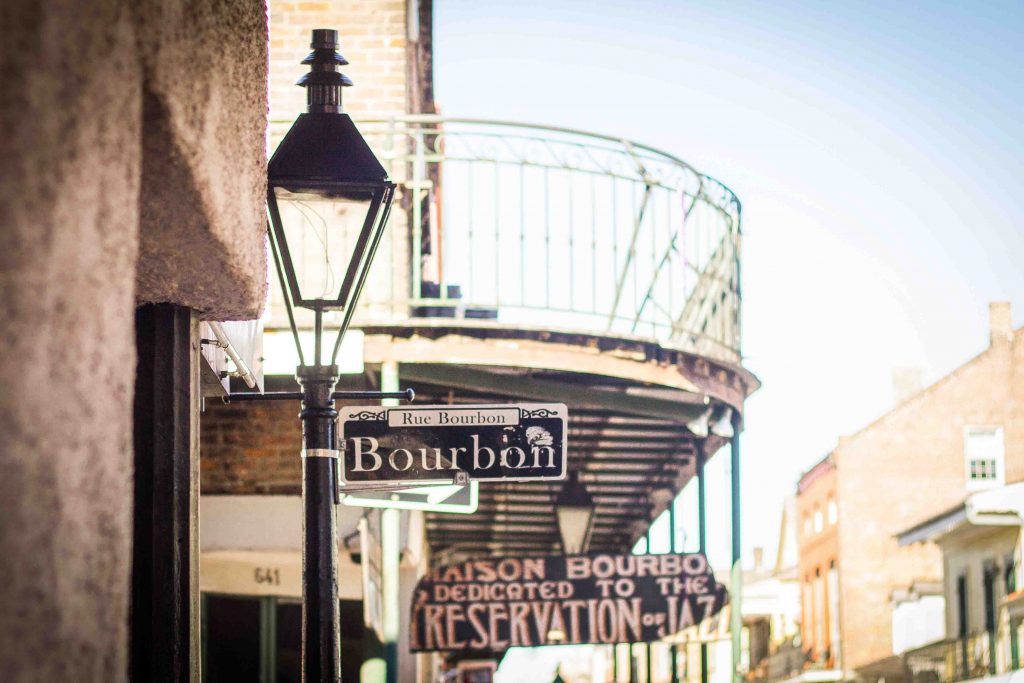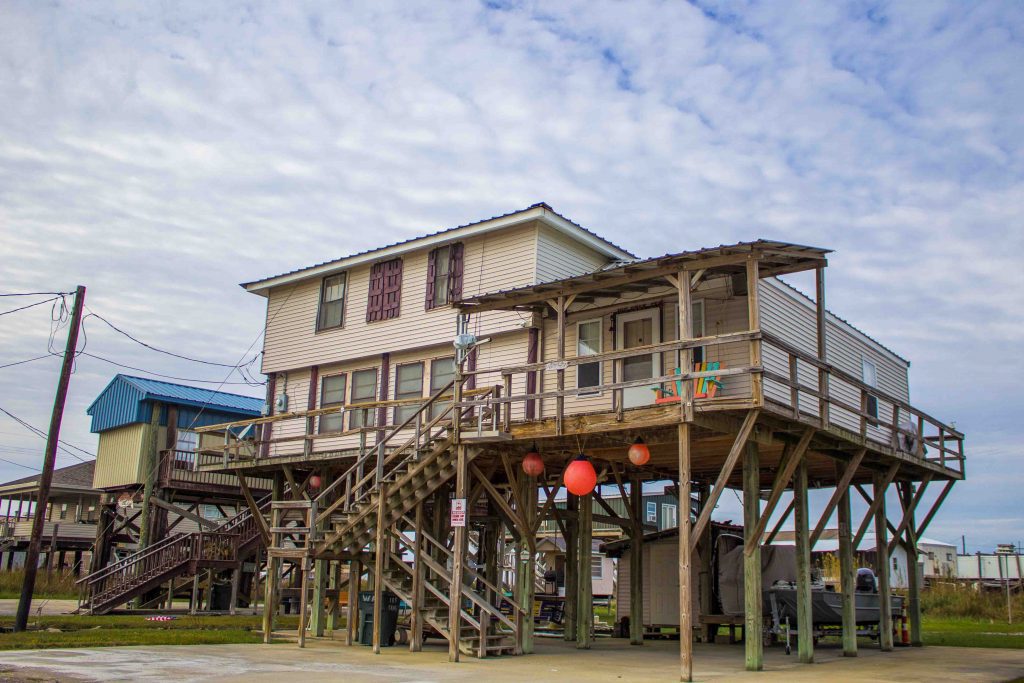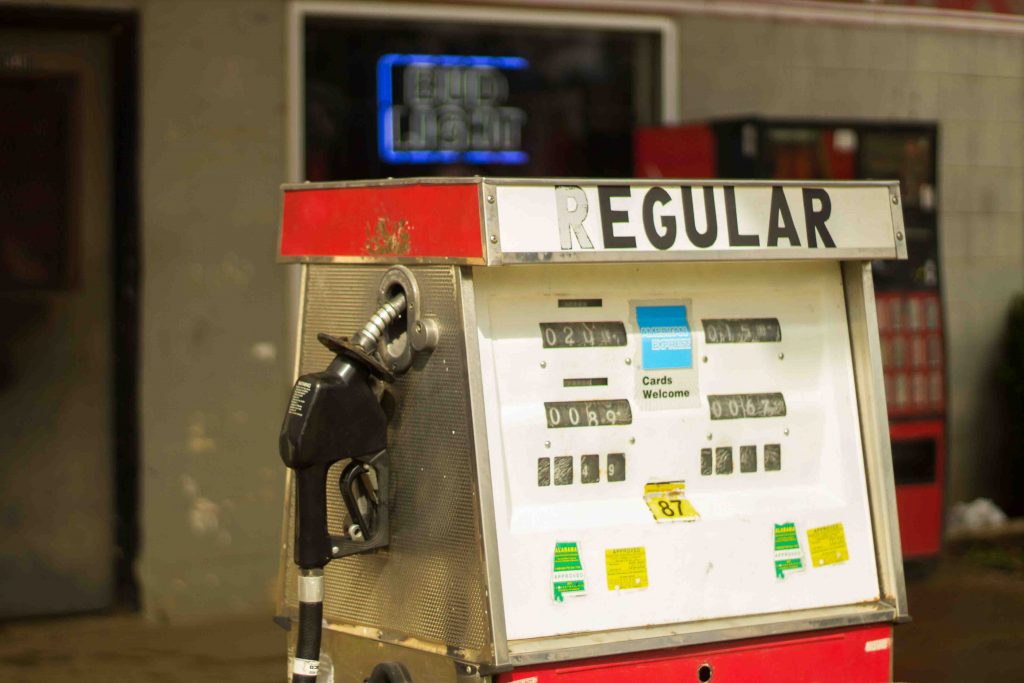Sometimes the best trips are the ones you didn’t plan for, the ones that are totally unexpected and happen on accident or by coincidence. Other times, trips that have been long planned turn out pretty great, too. And this human rights- and social justice-themed road trip through the American South, it had been a long time in the making.
We initially planned to travel through the South as one segment of a much longer road trip that would cross almost the entire U.S. After having had to back out of the original trip, we jumped at the chance to spend 2.5 weeks doing one section of it a few months later.
We could potentially have done some other part of the original route, like going down the East Coast or through some national parks, so the South probably doesn’t seem like the most obvious choice.
But its warm weather drew us in (seeing as we were coming from Montana in January), and the feeling that we might not have another easy chance to get down there sealed the deal. Plus, it’s a region of our country we both knew relatively little about, and we wanted to know more.
With the human rights and social justice focus we had planned for the South, this part of the trip was well in line with our values too, and that made it feel like an obvious priority. And when we got off the plane in New Orleans to learn that the term “alternative facts” had been coined while we were in the air, well, it felt like the universe confirming that it was the right time for this trip.
Historical trips to the South are pretty common, and our route took us to many of the big sites related to the Civil Rights Movement, the Civil War, and the history of slavery. But another component of our trip was environmental, learning about the geography and ecology of fragile areas in the South (namely Louisiana), the threats they’re facing today, and the lives of the people who live there.
Given the South’s statistics on poverty and inequality, we appreciated the chance to learn about contemporary issues and the current status of minorities and other marginalized groups, too. But we also wanted to see if what we found in the South would challenge some of the common stereotypes of the region (spoiler: it did).
We learned so, so much about so many critical historic and contemporary topics during this trip. Honestly, I think I’m a better citizen for having taken it.
It gave more context to events I vaguely recalled from history class, opened my eyes to human rights and environmental issues people are facing now, and provided a necessary if painful reminder of the ugliest times in my own country’s history – and an acknowledgment of some of the ugliest aspects of our society today.
So, where did this road trip take us?
Over 1,500 miles through Louisiana, Mississippi, and Alabama! We have more detailed posts coming up on some of the trip’s highlights, but to give you a taste of what the South has to offer, here’s an overview of the main sites we visited.
Louisiana
With affordable flights to New Orleans and a friend willing to host us there, it was the obvious start and endpoint for our trip. Of course, you can argue than New Orleans, which was quite a contrast to our other stops, isn’t really part of the South. But it’s a city I’ve always wanted to visit, mostly because I’d heard about how different it feels from the rest of the U.S.
During our four days in New Orleans, we spent hours wandering the city’s neighborhoods and taking in the architecture, cemeteries, and general vibes. But apart from a walking tour focused on the history and culture of voodoo in the city, two of the biggest highlights of our time there were actually day trips: a kayaking tour through the nearby swamp and a visit to Whitney Plantation, the only one of the area’s many historic plantations to focus on the experience of the slaves who lived there.
Knowing we’d want to see more of Louisiana than just New Orleans, which I imagine most of the state’s 4 million other residents see as an anomaly, we headed out of the Big Easy. With limited time, a half-day stop in Baton Rouge mainly allowed for visits to the State Capitol and the Old Louisiana State Capitol, which houses a museum on the state’s political history. And wow, was the exhibit on populist politician Huey Long, former Louisiana Senator and Governor, alarmingly familiar.
Our other main destination in Louisiana was the town of Houma (population: 34,000; elevation: 10 feet; pronunciation: “hoe-muh”). Admittedly, it was largely Beasts of the Southern Wild, a film about life on the other side of the levee, that piqued our interest in this far southern area of the state.
Our one full day there was spent on a long drive through several stilted house-filled towns, including locations where the movie was set and filmed. We also visited the Bayou Terrebonne Water Life Museum and the Wetlands Acadian Cultural Center, highlighting the area’s ecology and Acadian history and culture, respectively.
Mississippi
After what felt like too little time in both New Orleans and Houma, we were on the road to our second state: Mississippi.
Natchez is a quaint little town on the Mississippi River and a popular spot for history lovers and dedicated B&Bers alike. The main things of interest to us were the Forks in the Road slave market and the William Johnson House, which tells the story of a free Black man during the time of slavery. Since Ryan loves photographing old ghost towns, we also squeezed in a camera-focused trip to the mostly abandoned town of Rodney an hour away.
The drive to our next stop, Jackson, took us on the famed Natchez Trace and past Emerald Mound, a former Native American ceremonial site. Once we arrived in Jackson, the first place we visited is one we were surprised to find there: the International Museum of Muslim Cultures, the first museum of its kind in the U.S.
Next came the first of many sites related to the Civil Rights Movement, the Smith Robertson Museum. Housed in the town’s first school for African-American students, it tells the story of racial integration in Mississippi’s education system, as well as the history of the Great Migration 30 years earlier. Not too far away, the Greyhound station where Freedom Riders were arrested still stands, though you’d never guess its past without the historical marker out front.
On our way back to New Orleans a week later, we made a final stop in Mississippi. You won’t find Hattiesburg on many “historical South” itineraries, but it had plenty of personal significance for me, as the town where my mother lived as a young child and later attended college.
Alabama
We started our tour of Alabama in Birmingham, which kept us busy with historical sites. The Birmingham Civil Rights Institute was probably the most developed (and priciest) museum we visited on the trip, with extremely informative exhibits on the Civil Rights Movement and the current struggle for equality; it also surprised us with the temporary NUEVOlution exhibit on present-day immigration to the U.S.
We also learned about the town’s post-Civil War industrial development at the Vulcan Museum, and visited the tragically infamous 16th Street Baptist Church, where a 1963 bombing killed four young girls.
And when we were outside in Birmingham, we were walking among sculptures illustrating the Children’s Crusade in Kelly Ingram Park and along the Birmingham Civil Rights Heritage Trail, where signs detail the town’s role in the Civil Rights Movement.
After Birmingham, one night spent near Montgomery gave us the chance to see two sites reflecting very different time periods but some parallel race issues. We started the day at the First Confederate White House (which, to say the least, presented Jefferson Davis in a different light than I’m used to), before heading to the Freedom Rides Museum, located at the Greyhound station where a white mob violently attacked the Freedom Riders in 1961.
Our last historic stop was Selma, where the Edmund Pettus Bridge was the site of Bloody Sunday and the starting point of Martin Luther King, Jr.’s Selma to Montgomery March. We also visited the Old Live Oak Cemetery and found a number of prominent graves of Confederate soldiers, but the highlight of our time in Selma was the Voter Rights Museum. Its exhibits cover not only the historic struggle for voting rights, but also the tactics that disenfranchise poor and minority voters in Alabama even today.
There’s so much more to see in the South than what we were able to squeeze into this road trip, and it left us hungry for more. Georgia, South Carolina, and Tennessee have so many more historic sites I’d love to see, too – maybe we’ll take “Southern Road Trip: The Sequel” one day?
Plan Your Own Road Trip
Maybe by now you’re convinced that the South is well worth a visit and that a road trip is the best way to do it. If you want to plan a similar trip of your own, here are a few of our top tips and lessons learned:
Once we’d narrowed the trip down to three states, we planned our exact route by researching tons of possible destinations using WikiTravel, TripAdvisor, other travel blogs, and tourism boards for various towns and regions. Then we made a map with a pin in each spot that seemed interesting.
Maybe we just really like maps, but it was super helpful in showing us what routes were feasible and which towns were too far out of the way. Unless you have extensive geographical knowledge of the South, I highly recommend doing the same.
We started and ended our trip in New Orleans so we could save money by buying round-trip plane tickets and by getting and returning our rental car at the same place, and we planned our route as a loop to avoid having to double-back. Make your route a loop if possible, and if it’s not, look into whether it’s worth doubling-back to your starting point (it may not be).
After New Orleans, we only spent one or two nights in each destination, and also took day trips from some of them. Given the amount of time we had and the number (and location) of things we wanted to see, it made sense for us – but it was a lot of time in the car. If you can, try to schedule at least two nights at every stop so you don’t feel like you’re constantly on the move.
Compared to the deal we found on our rental car, the cost of the insurance was a hard pill to swallow. If you’re renting a car, make sure to factor the insurance into your budget. Pro-tip: if you already have liability insurance, check to see if your credit card will cover collision damage, and you may not need to buy it at all.
We stayed in a variety of accommodations on the trip, including Airbnb, CouchSurfing, camping, B&Bs, and standard hotels. The best (and best value) option is different in different towns, so it pays to check out all the possibilities in each place you visit.
We also made sure to schedule a few nights at places with kitchens, so we’d be able to mix in some home-cooked meals. Airbnb is often a good bet for getting a kitchen, but hotels like Extended Stay America and StayBridge Suites have them as well.
On a trip like this, a lot of the highlights are museums. But no matter how passionate and enthusiastic you are, it’s a lot of (often horrifying) information to take in, and there were times I felt myself on the verge of getting museum-ed out. If you can, try to limit your schedule to one museum a day and alternate with outdoors activities, city exploration, or other events.
What are the most memorable human rights or social justice sites you’ve visited?
PIN IT!












Looks so interesting and definitely a trip i need to put on my list! I visited New Orleans so briefly, but a road trip to Alabama looks fascinating!
Birmingham was a really cool city (I had no idea!), and there are some really great sights to see in Selma and Montgomery, too. Definitely recommend it 🙂
I’ve been to 39 US states but still yet to get to much of the deep South. Thank you for sharing this!
It’s definitely the last region most people visit – that’s part of why we went!
Very interesting trip and ideas. Great pictures..
Thanks so much! It was a really eye-opening trip – we recommend this itinerary to everyone 🙂
I loved reading about your trip. I’m currently planning our first trip the US and wanted to include some destinations to learn about the civil rights in America. Thanks for the suggestions.
I’m so glad you’re making that a priority of your trip! There are a ton of important Civil Rights sites all over the South, especially in Mississippi and Alabama. Hope you’re able to make it to some of them!
This is really interesting, it sounds like a great trip that also allowed you to learn a lot. It’s on my bucket list now!
It definitely was, I’m so glad to hear you’re interested in doing something similar! 🙂
You must have had a spectacular experience! Awesome road trip, Jen!
Thanks, Agness! We did have a great time, and learned so much! 🙂
What an interesting and important theme for a road trip! I would have loved to hear more about your reactions and thoughts to what you witnessed as white US citizens in today’s age of , arguably, similiar racial tensions to that of the 1960s. I think processing and expressing those emotions and responses is as crucial as acknowledging the historical brutality!
Thank you! We have a few posts coming up that will go into more detail about some of our experiences. Some of our favorite places were ones that talked about how they relate to current issues too – learning about the laws that suppress minority voters parts of Alabama was shocking.
I love the approach you have taken! I bet you have learned a ton! I have only visited California in the US but would be interested in visiting the south too, one day. But omg, so many museums would kill me 😉
Thank you! We really did, and we felt like they were such important things to learn about. I love California, but obviously a very different side of the US 🙂
I am so glad you enjoyed your visit here! There is a lot more to do in Alabama than people realize. Also Governor Bentley is no more! Haha.
Haha! We had a great time there. We ended up being in Montgomery and Selma mostly on the weekend which wasn’t ideal, but the Voting Rights Museum was great. Birmingham was really cool and had so much going on, we could definitely have spent more time there.